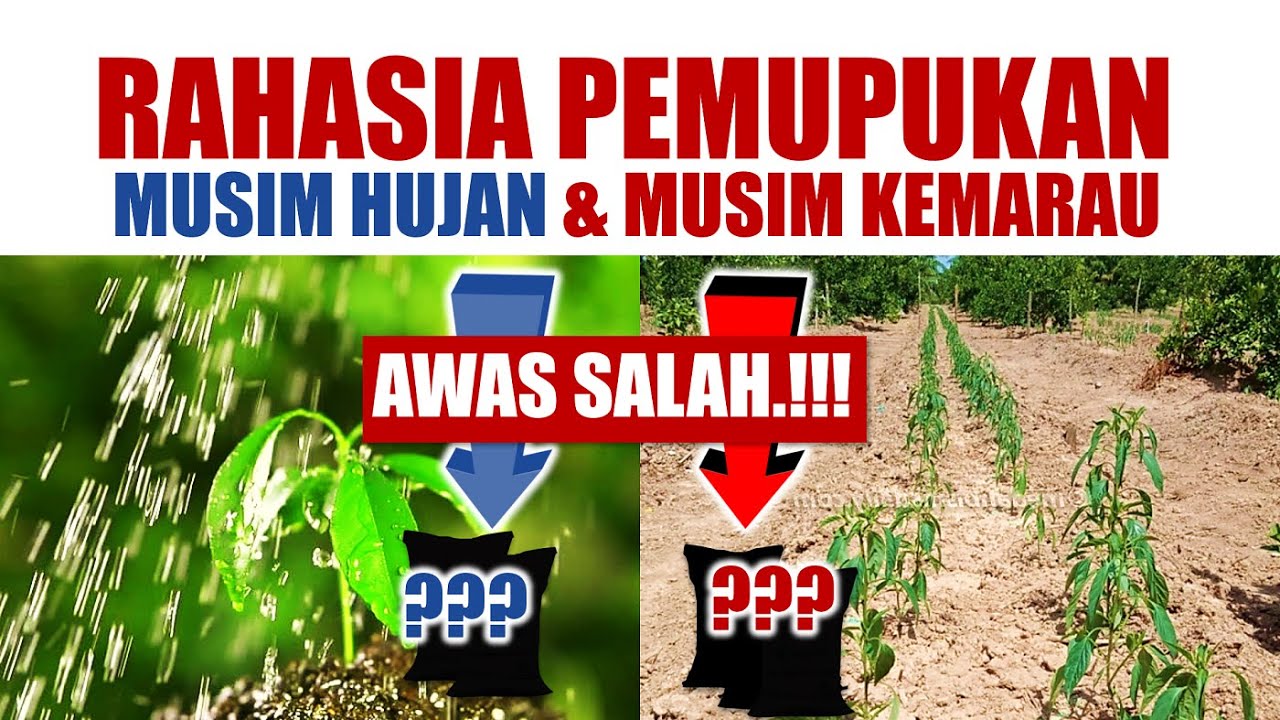WAJIB TAU.!!! SOLUSI LENGKAP CEGAH TANAMAN KENA BUSUK AKAR, LAYU DAN MATI SAAT MUSIM HUJAN
Summary
TLDRIn this informative video, the speaker discusses the challenges of maintaining plant health during the rainy season due to increased soil moisture, which fosters pathogen growth. He explains how to measure soil moisture and emphasizes the importance of maintaining optimal levels (50-70%) for crop health. Practical solutions include raising planting beds to prevent water accumulation, applying beneficial microorganisms in advance to combat pathogens, and managing excess water through careful irrigation practices. The speaker also highlights the significance of weed management in controlling moisture levels. Viewers are encouraged to engage with additional resources to enhance their agricultural practices.
Takeaways
- 😀 High soil moisture during the rainy season increases the risk of plant diseases due to the proliferation of pathogens.
- 💧 Soil moisture is defined as the percentage of water content in the soil, affecting plant health.
- 📏 The formula for measuring soil moisture is: (weight of water / weight of dry soil) x 100%.
- 🌱 Ideal soil moisture for cultivated plants typically ranges from 50% to 70%.
- ☔ During the rainy season, excess water can lead to higher soil moisture levels, promoting disease development.
- 📊 Understanding the difference in plant health due to varying moisture levels is crucial for effective farming.
- 🌿 It is essential to create higher planting mounds to prevent excess water accumulation around plant roots.
- 🔍 Using biological agents can help manage soil health and protect plants from pathogens.
- 🌼 Regular monitoring and evaluation of root health are critical for preventing root rot caused by excess moisture.
- 🛠️ Maintaining clear drainage systems is vital to ensure excess water is effectively removed from planting areas.
Q & A
Why are plants more susceptible to rot and disease during the rainy season?
-Plants are more susceptible to rot and disease during the rainy season due to high soil moisture, which promotes the proliferation of pathogens responsible for plant diseases.
What is soil moisture and how is it measured?
-Soil moisture refers to the percentage of water content in the soil. It can be measured using the formula: weight of water divided by the weight of dry soil, multiplied by 100%.
What is the ideal soil moisture level for most cultivated plants?
-Most cultivated plants prefer soil moisture levels between 50% to 70%.
What happens when soil moisture is below 50%?
-When soil moisture is below 50%, it indicates that the soil requires irrigation.
What is the impact of excessive water on plants during the rainy season?
-Excessive water can lead to reduced oxygen levels in the soil, hampering root growth and potentially causing root rot.
How can farmers manage water levels during heavy rainfall?
-Farmers can manage water levels by creating raised planting beds, allowing excess water to drain away and preventing water accumulation in the planting holes.
What role do biological agents play in plant health during the rainy season?
-Biological agents help protect plants from diseases by competing with pathogens. It's important to apply these agents well in advance to allow their population to establish and effectively manage pathogens.
How can farmers prevent soil moisture from negatively affecting their crops?
-Farmers can prevent negative effects by ensuring proper drainage, removing weeds that can retain moisture, and applying appropriate biological controls to manage pathogens.
What should be done if root rot occurs due to excess moisture?
-If root rot occurs, it is recommended to use oxygen-rich solutions like hydrogen peroxide, applied in low concentrations to help improve oxygen levels around the roots.
What are some signs that a plant is suffering from water stress?
-Signs of water stress include yellowing leaves, wilting, and poor growth. These symptoms indicate that the plant may be receiving too little or too much water.
Outlines

This section is available to paid users only. Please upgrade to access this part.
Upgrade NowMindmap

This section is available to paid users only. Please upgrade to access this part.
Upgrade NowKeywords

This section is available to paid users only. Please upgrade to access this part.
Upgrade NowHighlights

This section is available to paid users only. Please upgrade to access this part.
Upgrade NowTranscripts

This section is available to paid users only. Please upgrade to access this part.
Upgrade NowBrowse More Related Video

Cara Penanaman Kencur Dan Pengolahan Lahan

pH Tanah Asam Karena Hujan ?? | Temukan Fakta dan Cara Memperbaikinya | Seri Pupuk Organik Ep.12

Pengertian Kesuburan Tanah (Materi Kesuburan Tanah Dan Pemupukan)

Depth & Frequency of Irrigation | Irrigation Engineering | Available Moisture | Consumptive Use

Types of Soil | Water Flow and Absorption Test | Sand, Loam and Clay Soil

RAHASIA PEMUPUKAN MUSIM HUJAN DAN MUSIM KEMARAU
5.0 / 5 (0 votes)